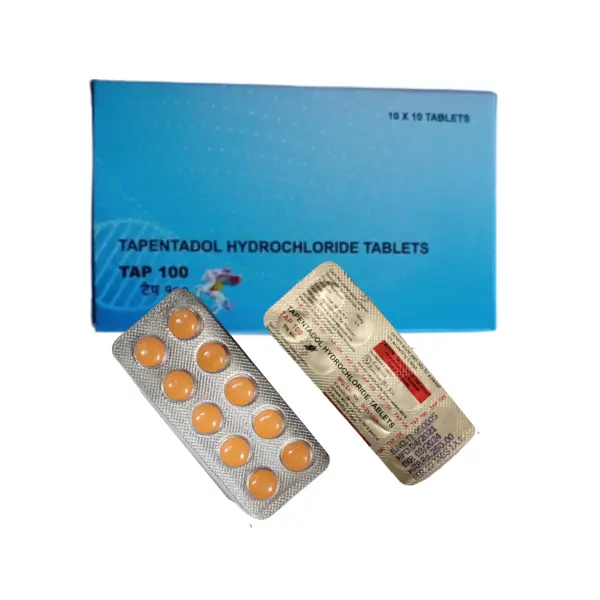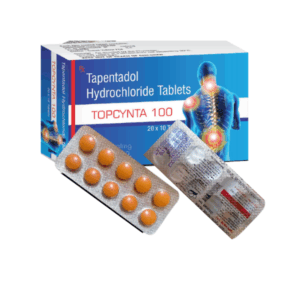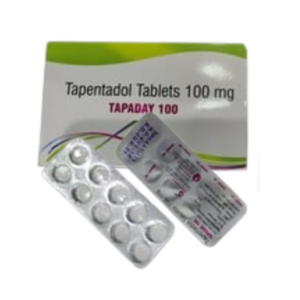Tap 100mg is a prescription-strength painkiller that contains Tapentadol, an opioid analgesic known for its effectiveness in managing moderate to severe pain. Whether it’s nerve-related, injury-induced, or chronic musculoskeletal pain, Tap 100mg offers reliable relief when other painkillers aren’t enough. In this guide, we’ll explore everything you need to know about this medication, including how it works, how to use it safely, and what to expect.
What is Tap 100mg?
Tap 100mg is a centrally acting pain relief tablet that contains 100mg of Tapentadol as its active ingredient. Tapentadol belongs to the class of opioid analgesics, which work directly on the brain and spinal cord to reduce pain sensations. Due to its dual mechanism—both blocking pain signals and enhancing natural pain inhibition—it provides faster and longer-lasting relief compared to many traditional painkillers.
How Does Tap 100mg Work?
Tap 100mg works through two primary actions:
-
Mu-opioid receptor agonism: Tapentadol binds to specific receptors in the brain that are responsible for pain perception. By activating these receptors, it effectively blocks the transmission of pain signals.
-
Norepinephrine reuptake inhibition: It also prevents the reabsorption of norepinephrine, a brain chemical that plays a role in pain modulation. This enhances the body’s natural ability to suppress pain.
The combination of these two actions makes Tap 100mg suitable for both neuropathic pain (nerve pain) and nociceptive pain (physical pain due to injury or inflammation).
Uses of Tap 100mg
Tap 100mg is commonly prescribed for:
-
Chronic lower back pain
-
Osteoarthritis-related joint pain
-
Neuropathic pain (e.g., sciatica, diabetic neuropathy)
-
Injury-related pain (fractures, sprains)
-
Post-surgical pain
-
Cancer-related pain (under specialized care)
It is especially useful for patients who haven’t responded well to non-opioid analgesics like ibuprofen, paracetamol, or tramadol.
Benefits of Tap 100mg
-
Fast-acting pain relief: Begins working within 30–60 minutes
-
Dual-action formula: Targets both nerve and physical pain
-
Reduces dependency on multiple painkillers
-
Improves quality of life: Enhances mobility and daily functioning
-
Fewer gastrointestinal issues: Compared to traditional NSAIDs
Substitutes and Strength
Dosage and Administration
-
Recommended Dose: Typically one tablet every 8 to 12 hours, depending on the severity of pain and your doctor’s recommendation.
-
Route: Oral
-
With or without food: Can be taken either way, but should be taken consistently (either always with food or always without).
-
Swallow whole: Do not crush, break, or chew the tablet.
Always follow your doctor’s dosage instructions. Misuse can lead to serious health risks including overdose or dependence.
Side Effects of Tap 100mg
While Tap 100mg is generally well-tolerated under medical supervision, some side effects can occur:
Common Side Effects:
-
Dizziness or light-headedness
-
Drowsiness
-
Nausea or vomiting
-
Constipation
-
Dry mouth
-
Headache
Serious Side Effects (seek medical help immediately):
-
Shallow or slowed breathing
-
Fainting or confusion
-
Hallucinations
-
Symptoms of addiction (craving or inability to stop use)
If you experience any unusual or severe symptoms, contact your healthcare provider immediately.
Safety Advice
🧠 Mental Alertness:
Tap 100mg can cause drowsiness or dizziness. Avoid driving or operating machinery until you know how the medicine affects you.
🍼 Pregnancy & Breastfeeding:
This medication is not recommended during pregnancy or while breastfeeding. Consult your doctor if you are pregnant, planning pregnancy, or nursing.
🍷 Alcohol Use:
Avoid alcohol while taking Tap 100mg. Alcohol increases the risk of sedation, dizziness, and respiratory depression.
🫁 Pre-existing Conditions:
Inform your doctor if you have:
-
Liver or kidney disease
-
Breathing problems (asthma, COPD)
-
A history of drug abuse or addiction
-
Head injuries or seizures
Interaction Warnings
Tap 100mg may interact with other medications, increasing the risk of side effects or reducing effectiveness. Key interactions include:
-
Other opioids or sedatives: May cause extreme drowsiness or breathing issues.
-
Antidepressants (SSRIs, SNRIs, MAOIs): Risk of serotonin syndrome.
-
Muscle relaxants or antihistamines: Can intensify sedative effects.
-
Alcohol and recreational drugs: Increase the risk of life-threatening side effects.
Always share a full list of medications and supplements with your doctor before starting Tap 100mg.
Storage Instructions
-
Store in a cool, dry place below 25°C
-
Keep away from moisture, heat, and direct sunlight
-
Store in a secure place away from children and potential misuse
Missed Dose & Overdose
-
Missed Dose: Take it as soon as you remember. Skip if it’s almost time for the next dose. Do not double-dose.
-
Overdose Symptoms: Slow breathing, extreme drowsiness, unresponsiveness. Seek immediate medical attention.
FAQs about Tap 100mg
Q1. Is Tap 100mg addictive?
Ans: Like other opioids, it has the potential for addiction. Use only as prescribed.
Q2. Can I take Tap 100mg with paracetamol or ibuprofen?
Ans: In many cases it is safe. However, consult your doctor first.
Q3. How long does Tap 100mg last?
Ans: Pain relief usually lasts between 6 to 12 hours.
Q4. Is it safe for long-term use?
Ans: It may be prescribed for long-term use under medical supervision. Regular monitoring is important.





Reviews
There are no reviews yet.